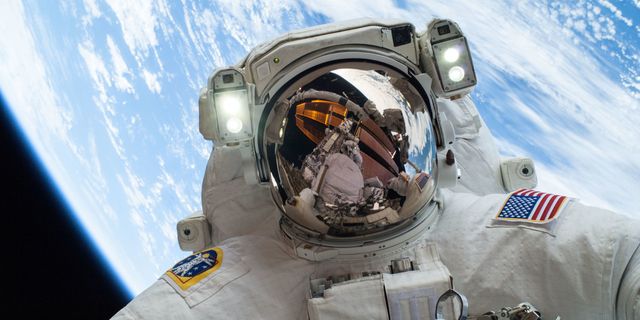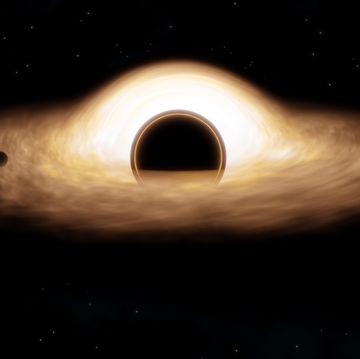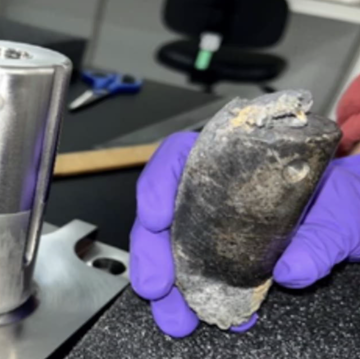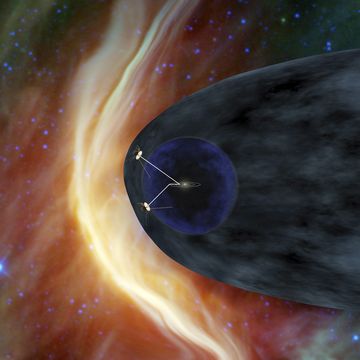NASA's fiscal year 2018 budget proposal was released today, and some of the priorities of the agency are going to get switched around. The budget suggests $19.1 billion for NASA in 2018, only $561 million less than what the agency received in fiscal year 2017, but human spaceflight and exploration of the solar system are set to take precedence over Earth sciences and educational outreach programs.
The budget proposal still needs approval from Congress, so some program funding might still be altered. For the most part, however, the budget proposal gives us a pretty good look at what NASA will use your $35 a year for. Here are the programs that will blast off into the future, and the ones that will get grounded.
WINNERS
The Europa orbiter mission will get a boost of $150 million. The the highly-anticipated spacecraft to visit Jupiter's moon and search for signs of life was funded to the tune of $275 million in 2017, while the new budget proposal would boost it to $425 million for 2018. It's no surprise—the Europa mission is a pet project of Republican congressman John Culberson, whose district includes NASA facilities in Texas. The budget does not include any funds for a Europa lander, however.
Missions to Mars will continue for the most part. The budget puts the 2018 InSight lander back on track and keeps the Mars 2020 rover about the same, but it doesn't add a follow-up spacecraft to the Mars Reconnaissance Orbiter, currently the communications hub for all of NASA's Mars missions. The MRO has been in orbit since 2005 and won't last forever, so eventually a new orbiter will be needed to support future missions to Mars.
The Lucy and Psyche missions are officially on the budget now as well. The Lucy probe will study asteroids that share an orbit with Jupiter called Trojans, while the Psyche spacecraft will visit the smashed core of a protoplanet in the asteroid belt also called Psyche. The budget proposes a $117.1 million increase over expected funding for NASA's Discovery Program overall. That program includes both Lucy and Psyche, the InSight lander, and the Dawn probe currently in orbit around Ceres.
New Frontiers missions like Juno and New Horizons are set to stay on target, meaning New Horizons is funded for a 2019 flyby of the Kuiper belt object 2014 MU69, and Juno is fit to continue studying Jupiter. The OSIRIS-REx asteroid sample return mission, launched in September 2016, will continue as planned as well.
The Space Launch System, NASA's much-delayed heavy-lift rocket, and the Orion spacecraft to launch on top will receive a slight decrease in funding, but only a small fraction of the overall budget, leaving the programs to continue more or less as planned. The enormous rocket will not launch until 2019 at the earliest.
LOSERS
Earth sciences will sustain a $166.9 million cut, from the originally planned $1.92 billion to $1.75 billion. Earth science analysis takes a $70 million gash, and specific missions will see $137 million in cuts. The Deep Space Climate Observatory (DSCOVR) satellite, for example, will have funding cut for its Earth-monitoring camera EPIC, though the sat will continue to study the sun and the effects of solar weather. The new budget also cuts NASA's education programs from $100 million to $37.3 million.
In a statement on the new budget proposal, acting NASA administrator Robert Lightfoot said, "We are ending formulation of a mission to an asteroid, known as the Asteroid Redirect Mission, but many of the central technologies in development for that mission will continue, as they constitute vital capabilities needed for future human deep space missions." The Asteroid Redirect Mission—planned to retrieve a larger boulder from an asteroid and place it in orbit around the moon, was seen as unrealistically complex by many researchers.
As mentioned before, the new budget proposal does not set aside any funds for a mission to land on Europa. In fact, it stipulates that the $450 million for a Europa mission may not be used for a follow-on lander mission. "The budget provides no funding for a multi-billion-dollar mission to land on Europa," reads a document on the budget proposal, which continues that data analysis from the Europa Clipper should be completed before a lander is funded as well.
Astrophysics research will see an overall boost in budget, especially in STEM research, but Hubble is cut by $15 million. SOFIA, NASA's telescope jetliner, will get a $3.7 million cut. The upcoming Transiting Exoplanet Survey Satellite, a follow-on to Kepler, will continue development as planned, and the James Webb Space Telescope also stays at about the same funding levels.
You can read through NASA's entire summary of the 2018 budget proposal here.













